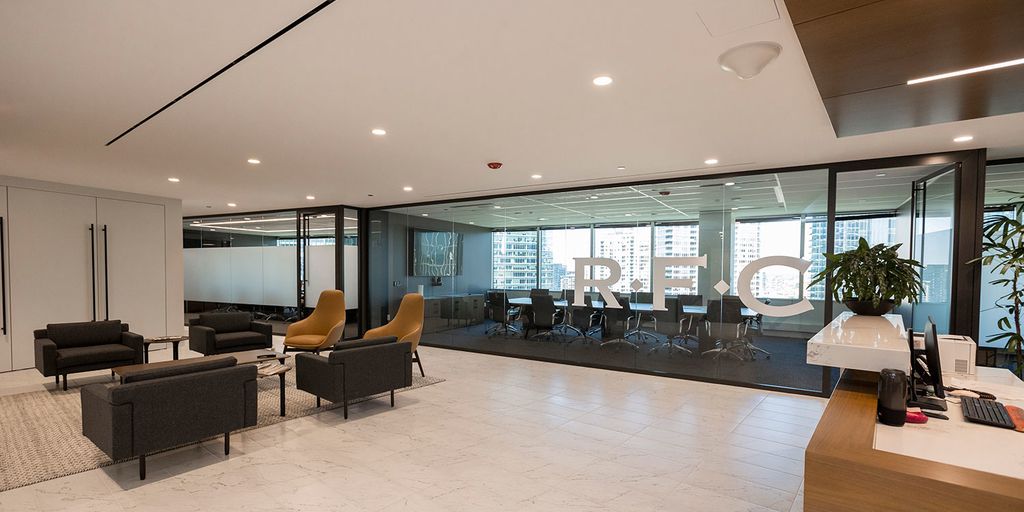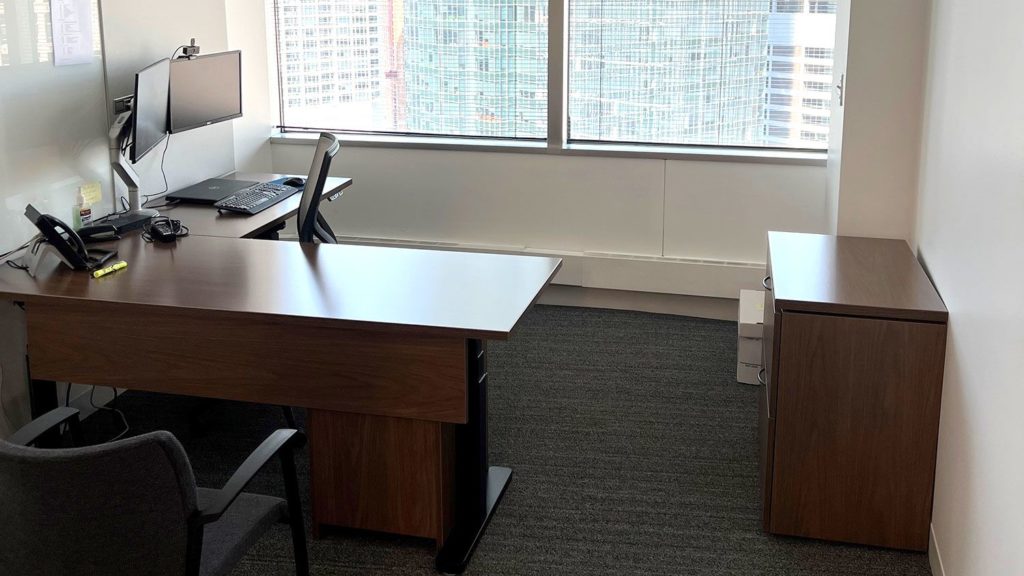Peter Billmeyer: In your space, with your explosive growth, if everyone in your firm came to work on any given day, a sizable percentage would, in your words, “have to sit on the floor.” How comfortable are you with that reality?
Patrick Croke: We’re very comfortable with less space. For us, the most important part of the process was learning how to listen to our people and adapt to their center of gravity, rather than forcing them into an office setting that didn’t work for them. We know that at least half of our workforce won’t be in the office five days a week. So, a desk or office for every person would mean we weren’t really listening. Reducing our rentable square footage also means lower overhead, and we think our clients appreciate that we can pass that savings along to them. Our top priorities were flexibility and a location that is easy to get to whether you drive, bike, or take the Metra or the L.
Peter Billmeyer: What about the design of the space is working best for your firm, and how does it most noticeably differ from the traditional law office of the past?
Patrick Croke:That old guard layout, with offices around the perimeter and cubicles in the center, was exactly what we didn’t want. Our new space is filled with natural light and glass. We offer both private offices and hoteling options and empower our people to figure out what works best for them. The bullpen-style design has been amazing for collaboration. Our office attracts entrepreneurial, strategic lawyers who understand exactly what we are doing from a business perspective.
Peter Billmeyer: Jay, your situation is a little different; you were one of few companies that actually expanded during the height of COVID.
Jay Rock:We did. We ran out of space at 321 N Clark Street and opted to expand at 333 W Wacker where we leased just under 27,000 square feet. When COVID hit, we were in the middle of the process with you of analyzing the best space for our business drivers. We chose to commit and charged forward with no regrets.
Peter Billmeyer: Did you feel, like Patrick, that figuring out the right office size was a big challenge?
Jay Rock: We needed time for the process. The site selection, build-out and move management is complex and we wanted to get it right. We learned how to really tap into the expertise of folks like yourself—plus design and construction teams—to find the right building for us.
Peter Billmeyer: How has your recruitment been going now that you’re in the new space?
Jay Rock: Honestly, we know there is a significant portion of the workforce that is just not excited to come to the office. But we are excited because we invested in a place where we know people want to be. I’m a firm believer that you can’t do everything on Zoom because you lose those organic, collegial interactions that happen when you’re in the office.



